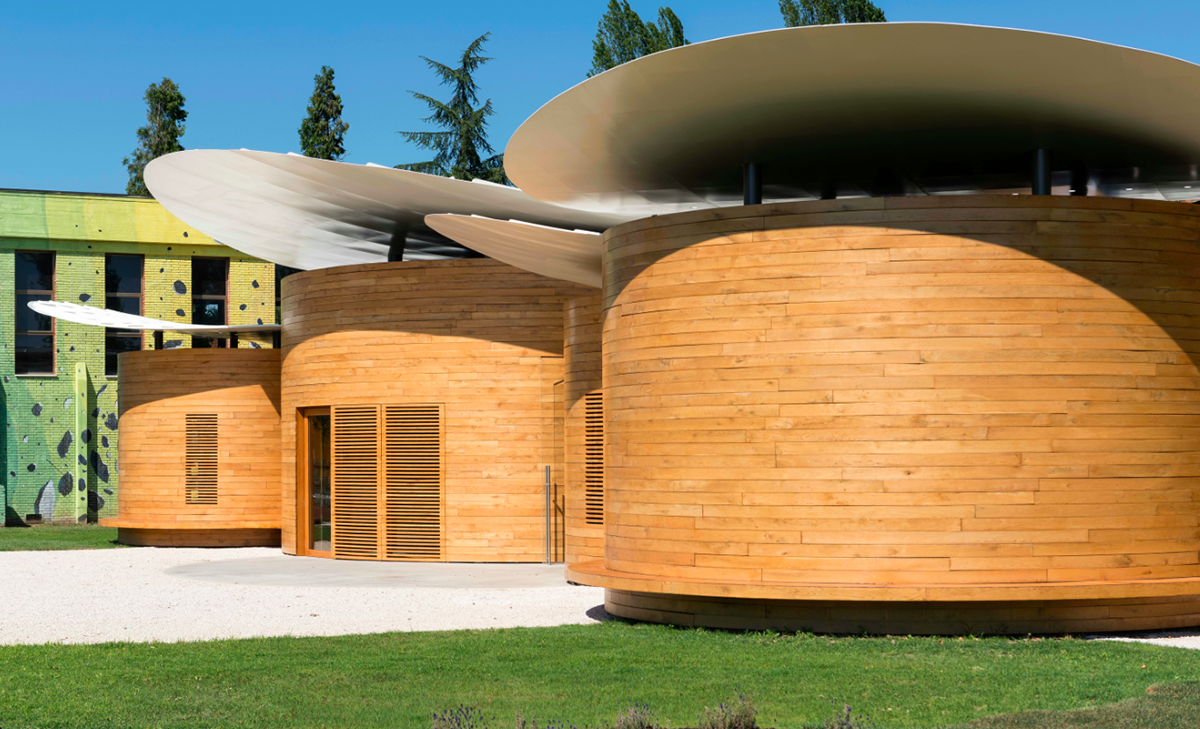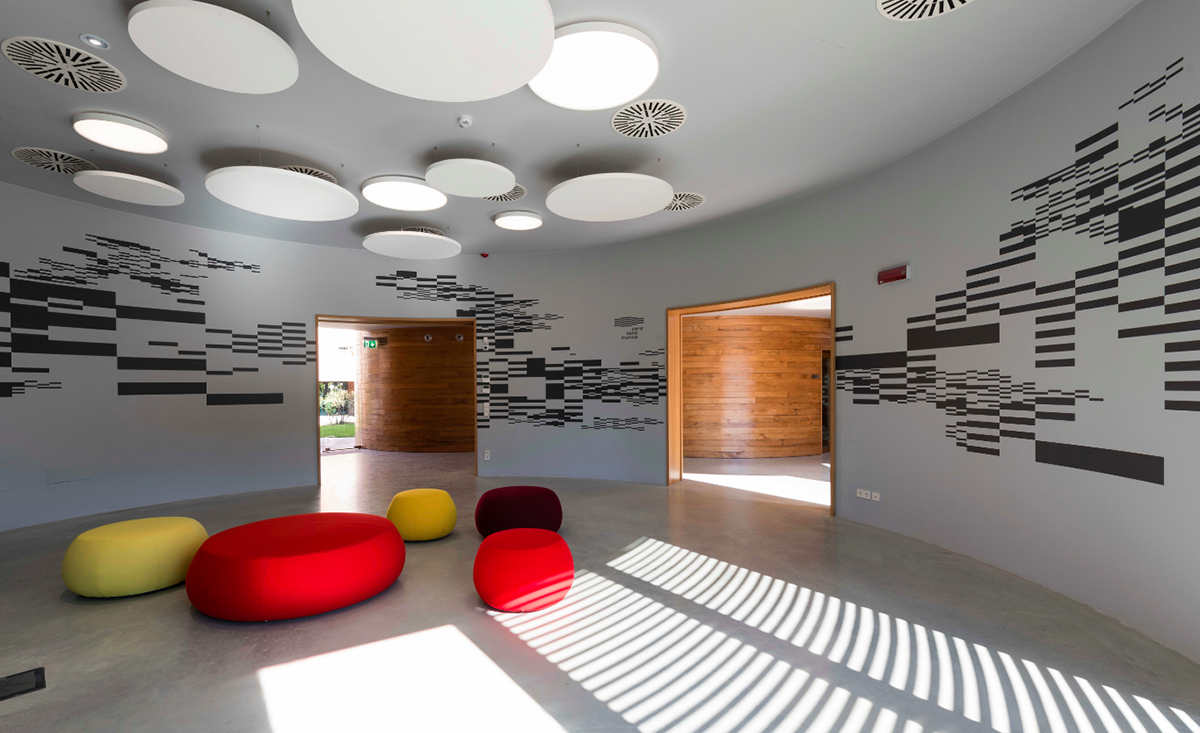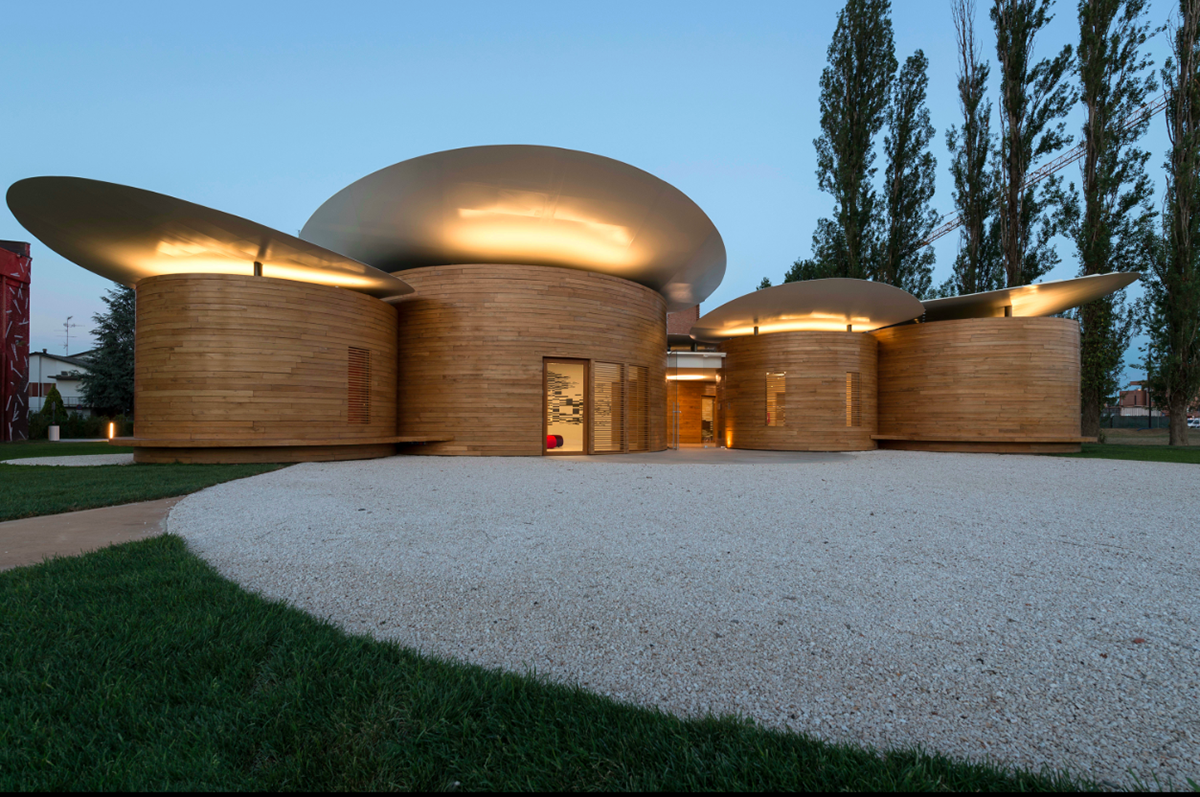Submitted by WA Contents
Nine wooden circular music boxes by MCA placed on the former Lamborghini manufacturing site in Italy
Italy Architecture News - Jun 12, 2017 - 15:27 15014 views

A cluster of nine wooden circular music boxes by Mario Cucinella Architects were situated on the former Lamborghini manufacturing site in Pieve Di Cento, Italy. The wooden circular volumes are carefully jointed to each other to serve as a "house of music", supporting two different programs: concert promotion and musical teaching in this region.
Resembling a small "orchestra" in a single bodily appearance, the House of Music of Pieve di Cento aims to disseminate music engagement in broader sense for the local community and tries to act as "a Secondary Music School" for this region.

The architectural language of the building is inspired by the musical tradition rooted in the city, resulting in a building comprising various independent elements, not unlike the "instruments" in an orchestra which collectively enhance the whole.
The studio uses the building material as oak wood paneling referencing to musical instruments - which wraps exterior and interior and permits - as in the bodies of the instruments - the containment and amplification of sound.

The building is composed of nine small circular music laboratories, which are also connected by a "piazza" - that acts as a distribution space and becomes a place for sharing and dialogue among young musicians. This central area is also intended for ensemble music and small rehearsals.
The House of Music is situated in a portion of the former Lamborghini manufacturing area which, after careful restoration with the help of the municipality, has been renovated and transformed into a leisure park.

The project site is reached by a bicycle path that connects it to the city center and the new expansion district south of the historic center, while a curvilinear wooden bench runs around the building and creates resting and restorative places facing the park.

"The House of Music thus becomes a space that can be used at any time of the day: a gathering space for the community, not only those in the music field. Illuminated externally, at night, the House of Music appears to the people as a constant and comforting "lantern" to encourage the resumption of musical and recreational activities in the aftemath of the earthquake," said the architects.

The buildings are made of a load-bearing masonry structure, which is also useful for its high thermal inertia and a sound insulation. The studio uses a ventilated facade cladding, formed with curved oak slats, guarantees excellent energy performance and gives the building a striking architectural quality.

A particular arrangement is set in the interior spaces of the buildings to achieve acoustic quality through materials and strategies for reducing reverberation. The MCA implements an autonomous system for each classroom ensuring flexible use of spaces at all hours of the day.

All images © Moreno Maggi
